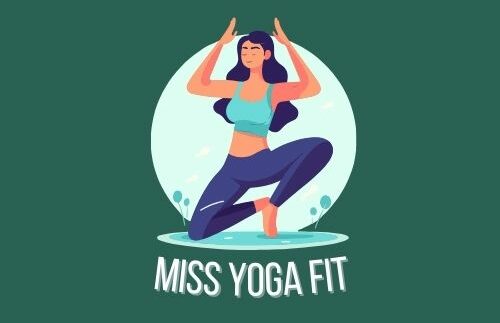If you’re looking to take your yoga practice to the next level, mastering the Headstand pose is a great way to challenge yourself both physically and mentally. Also known as Sirsasana, the Headstand pose is an inversion asana that offers a wide range of benefits for your body and mind.
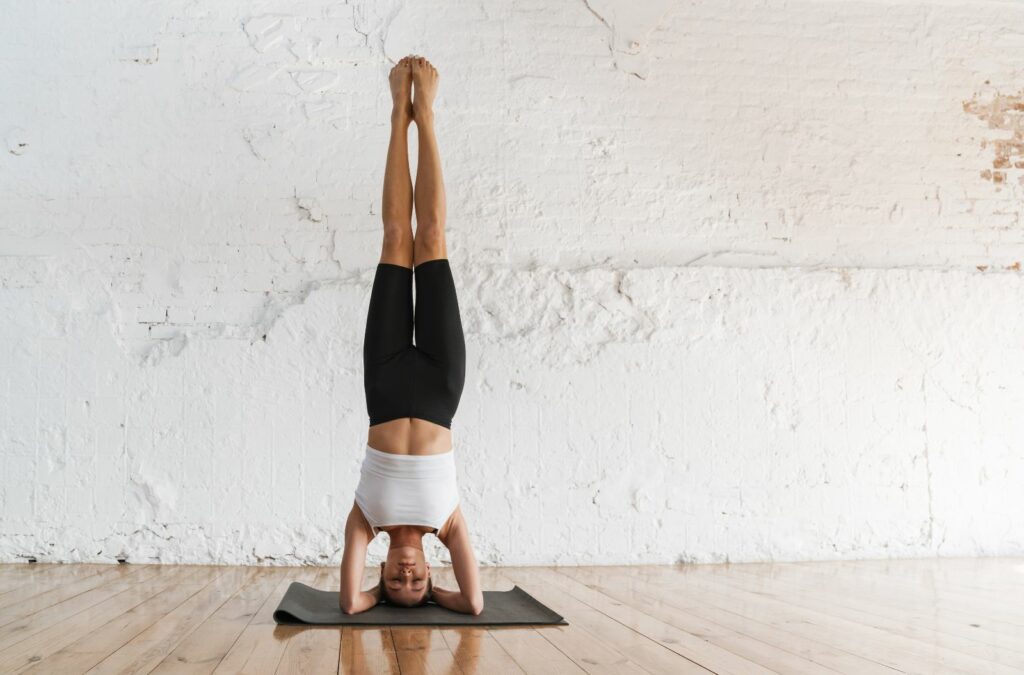
However, it’s essential to approach this pose with caution and respect, as it can be challenging and potentially dangerous if not practiced correctly.
How to do the Headstand (Sirsasana)
In this section, we will provide you with all the information you need to know about the Headstand pose, including step-by-step instructions, benefits, and important cautions to keep in mind.
Whether you’re a seasoned yogi or a beginner, our expert advice and guidance will help you practice the Headstand pose safely and effectively.
Key Takeaways:
- The Headstand pose, or Sirsasana, is an inversion asana that can offer numerous benefits for your body and mind.
- Practicing the Headstand pose requires caution and respect, as it can be challenging and potentially dangerous if not practiced correctly.
- Our expert advice and instructions will provide you with the necessary information to practice the Headstand pose safely and effectively.
- Modifications and props can assist beginners in building strength and confidence as they progress towards the full pose.
- There are numerous variations of the Headstand pose that can help you challenge yourself further, including partnering with another yogi.
Table of Contents
Understanding the Headstand Pose
If you’ve ever witnessed someone gracefully balancing on their head, they were most likely doing the Headstand pose, also known as Sirsasana. In this section, we will dive deeper into this inversion pose and explore its history, Sanskrit name, and level of difficulty.
History of the Headstand Pose
The Headstand pose has been practiced for centuries in yoga and is known as the “king of all asanas.” It’s believed to have numerous physical, mental, and spiritual benefits, making it a revered pose among yogis worldwide.
In ancient texts like the Hatha Yoga Pradipika, the Headstand pose is described as a pose that helps awaken the dormant energy of the crown chakra, Sahasrara. This energy center, when awakened, is believed to lead to spiritual growth and enlightenment.
Sanskrit Name
The Headstand pose is known as Sirsasana in Sanskrit, which is derived from the words “Sirsa” (meaning “head”) and “Asana” (meaning “pose”). It’s a straightforward name that accurately describes the pose, which involves balancing on the crown of the head.
Level of Difficulty
The Headstand pose is considered an advanced yoga pose due to its inverted nature, requiring strength, balance, and focus. It’s not advisable to attempt the pose without guidance if you’re a beginner, as it can be dangerous without proper preparation. However, with consistent practice and proper guidance, anyone can master the Headstand pose.
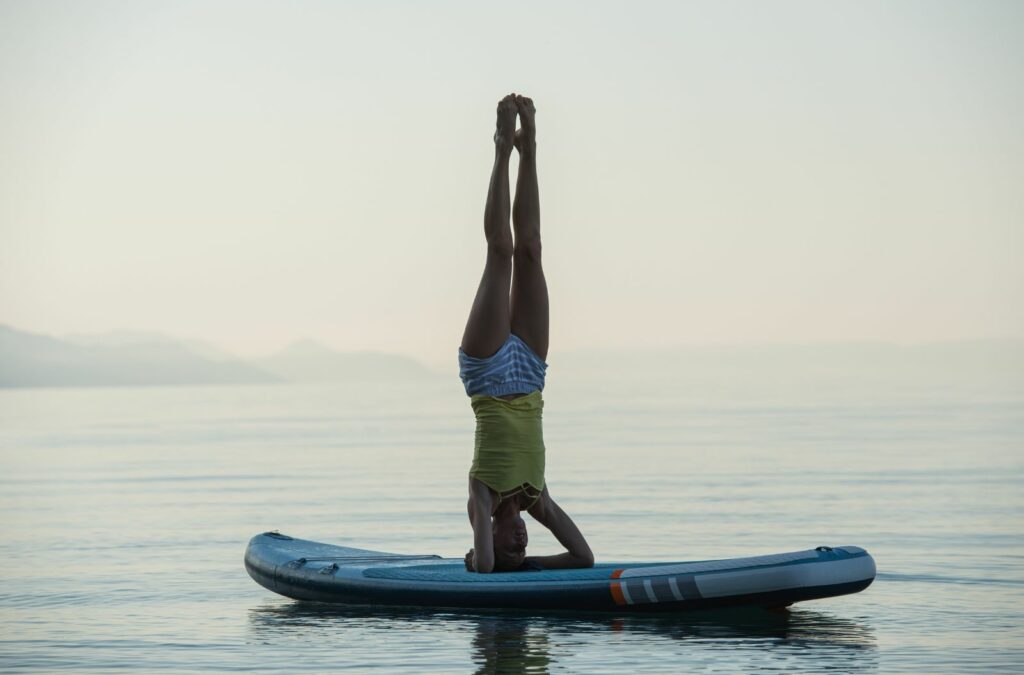
Benefits of the Headstand Pose
The Headstand pose, also known as Sirsasana, is an invigorating inversion pose that offers a range of physical, mental, and emotional benefits. Let’s take a closer look at some of these benefits:
| Physical Benefits | Mental and Emotional Benefits |
|---|---|
|
|
As you can see, the Headstand pose has a wide range of benefits for both the body and mind. Incorporating this pose into your regular yoga practice can lead to significant improvements in your overall health and well-being.
Cautions for the Headstand Pose
While the Headstand pose has numerous benefits, it’s crucial to approach the practice with care and caution to avoid any risks or injuries. We recommend keeping the following cautions in mind:
- Avoid practicing the Headstand pose if you have high or low blood pressure, heart conditions, neck injuries, or eye or ear problems.
- Always warm up before attempting the pose and avoid practicing it when fatigued.
- Practice under the supervision of an experienced yoga teacher if you’re new to the Headstand pose.
- Avoid compressing the neck or straining the shoulders while practicing the pose. Instead, use the strength of your arms and shoulders to lift your body.
- Avoid arching your lower back or holding the pose for an extended period. Instead, gradually build up your practice and hold the pose for a few seconds at a time .
- Never abruptly come out of the pose. Instead, slowly lower your legs towards the floor and rest in child’s pose or another restorative posture before resuming your practice.
Remember, the Headstand pose is an advanced yoga asana that requires patience, practice, and a deep respect for your body’s limitations. Avoid pushing yourself too hard and always listen to your body. If something doesn’t feel right, come out of the pose and rest.
Practicing the Headstand Pose
Practicing the Headstand pose (Sirsasana) requires a lot of strength, focus, and balance. It’s essential to approach this asana with caution and respect for your body’s limitations, especially if you’re a beginner. In this section, we will guide you through the step-by-step process of how to practice this asana safely and effectively.
Step-by-Step Instructions
First, begin in the Child’s pose (Balasana) and interlock your fingers, supporting the back of your head with your hands. Next, place the crown of your head on the mat, with your hands around your head, creating a tripod with your forearms.
Walk your feet in towards your body, slowly lifting your hips up while keeping your knees on the ground. Once you feel stable, lift your knees off the ground, straightening your legs into the air. Keep your core engaged and your gaze focused on your mat to maintain balance.
Take deep breaths and hold the pose for as long as you feel comfortable. When coming out of the pose, lower your legs slowly back to the ground, returning to the Child’s pose to rest and recover.
Tips for Beginners
If you’re new to the Headstand pose, it’s normal to feel a little bit nervous or intimidated. However, with the right approach and mindset, you can overcome any fears or challenges and safely progress towards the full pose. Here are some useful tips and advice for beginners:
- Start with preparatory poses: Before attempting the full Headstand, practice preparatory poses such as Downward-Facing Dog, Dolphin Pose, and supported Shoulderstand to build strength and confidence.
- Use a wall: Practicing Headstand with a wall can provide extra stability and support, allowing you to focus on finding proper alignment and balance.
- Engage your core: The key to maintaining balance in Headstand is by engaging your core muscles. Practice exercises such as Plank Pose and Boat Pose to help strengthen your core.
- Focus on your breath: As with any yoga pose, proper breathing is essential. Take slow, deep breaths and focus on the sound and sensation of your breath moving in and out.
- Stay relaxed: Don’t tense up or hold your breath while practicing Headstand. Instead, try to stay relaxed and ease into the pose gradually.
- Listen to your body: Avoid pushing yourself too hard or forcing yourself into the pose. Always listen to your body and respect its limitations.
Tips for Finding Balance
Finding balance in the Headstand pose can be challenging, but with practice and patience, you can build confidence and improve your form. Here are some tips to help you find your balance:
- Engage your core muscles to create a strong foundation.
- Keep your gaze fixed on your mat to maintain balance.
- Use your breath as a tool to stay calm and focused.
- Don’t rush into the pose; take your time to find your balance.
- Practice regularly to build strength and improve your form.
By following these tips, along with our step-by-step instructions and modifications, you can practice the Headstand pose safely and effectively.
Modifications and Props for the Headstand Pose
If you’re not yet comfortable practicing the full Headstand pose, don’t worry. There are plenty of modifications and props that can help you build the necessary strength and confidence to achieve the full pose.
One modification is to practice the Half Headstand (Ardha Sirsasana) first. This pose involves placing the crown of the head on the ground, rather than the entire head. This modification helps build strength in the upper body and core and also allows you to work on your balance without the added difficulty of lifting your entire body weight.
Another modification is to practice the Dolphin pose (Ardha Pincha Mayurasana). This pose involves placing the forearms on the ground and lifting the hips up, creating an inverted V-shape with the body. This modification helps build strength in the upper body, specifically the shoulders and arms, and allows you to work on your balance and focus.
Using props can also be helpful in practicing the Headstand pose. A folded blanket or yoga block can be placed under the head to provide cushioning and support. This can be especially helpful if you have any neck sensitivity or discomfort. Additionally, using a wall can help you build strength and confidence in the pose by offering support and assistance with balance.
| Modification/Prop | Description |
|---|---|
| Half Headstand (Ardha Sirsasana) | Place the crown of the head on the ground, rather than the entire head. This modification helps build strength in the upper body and core and also allows you to work on your balance without the added difficulty of lifting your entire body weight. |
| Dolphin pose (Ardha Pincha Mayurasana) | Place the forearms on the ground and lift the hips up, creating an inverted V-shape with the body. This modification helps build strength in the upper body, specifically the shoulders and arms, and allows you to work on your balance and focus. |
| Props – folded blanket/yoga block | Placing a folded blanket or yoga block under the head provides cushioning and support. This can be especially helpful if you have any neck sensitivity or discomfort. |
| Wall | Using a wall can offer support and assistance with balance, helping you build strength and confidence in the pose. |
Remember to always listen to your body and only attempt modifications and props that feel safe and comfortable for you. Over time, with consistent practice and dedication, you may find that you no longer need the modifications or props and can practice the full Headstand pose with ease.
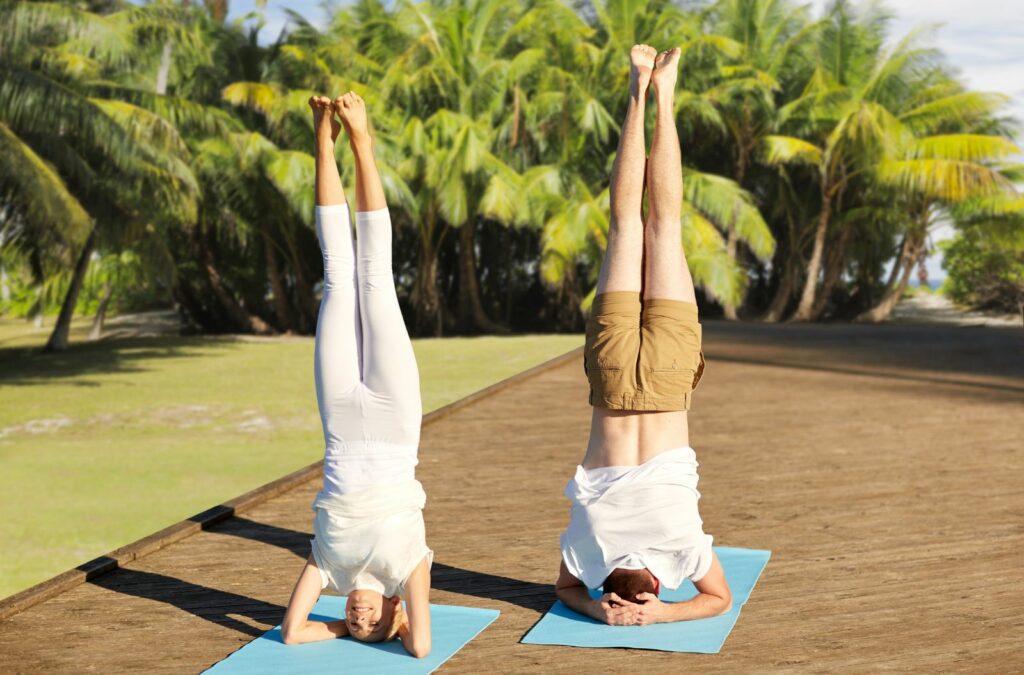
Variations and Partnering in the Headstand Pose
Once you have developed a comfortable level of confidence in the basic Headstand pose, you can start exploring a range of exciting variations.
These variations will not only challenge you physically but also mentally, by asking you to test your limits and push yourself out of your comfort zone. In addition, partnering with a fellow yogi can help you progress even further, by providing support and encouragement.
Variations of the Headstand Pose
Here are some of the most popular variations of the Headstand pose:
| Variation | Description |
|---|---|
| Bound Headstand | This variation incorporates a bind of the arms, which helps to deepen the stretch on the shoulders and upper back. |
| One-Legged Headstand | This variation involves lifting one leg off the ground and extending it towards the ceiling. |
| Lotus Headstand | This variation incorporates the lotus position into the Headstand pose, which requires a high level of flexibility in the hips and knees. |
Before attempting any of these variations, make sure to practice the basic Headstand pose consistently and master it fully. This will ensure that your body is ready for the added challenge.
Partnering in the Headstand Pose
Partnering in the Headstand pose can be a fun and rewarding experience, as it allows you to practice the pose with someone else’s support and guidance. Here is how you can partner in the Headstand pose:
- Stand facing your partner, about a forearm distance apart.
- Interlock your fingers and create a stable base by placing your forearms on the mat.
- Simultaneously lift one leg and place it on your partner’s shoulder, while your partner does the same with their leg.
- Once both legs are up, slowly push up into the full Headstand pose, using your partner’s shoulders for support.
- Hold the pose for a few breaths, before slowly coming down with your partner’s help.
Partnering in the Headstand pose requires trust and communication between partners. Make sure to practice with someone you feel comfortable with, and always communicate clearly throughout the practice.
Remember to always listen to your body and respect your limitations when attempting any variation or partnering in the Headstand pose.
With consistent practice and patience, you can continue to deepen your practice and experience all the benefits that the Headstand pose has to offer.es time and patience. Don’t get discouraged if it doesn’t come easily at first. With consistent practice and the right mindset, you can slowly but surely build your strength, focus, and confidence.
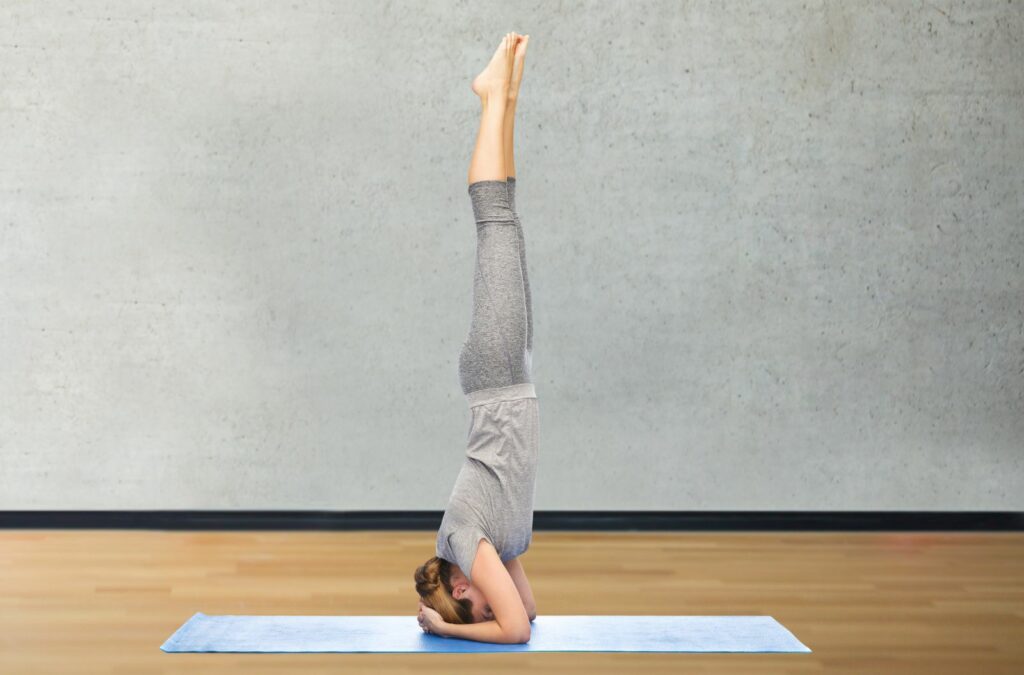
Conclusion
As we come to the end of our exploration of the Headstand pose, we hope you’ve gained a deeper understanding of this challenging yet rewarding yoga asana. Remember that this pose requires patience, practice, and respect for your body’s limitations.
Amanda Frier, a certified Power Yoga teacher living in the dynamic city of Sydney, Australia, has embarked on an inspiring journey of dedication and empowerment through the practice of yoga.
Her story, characterized by her commitment to sharing the transformative power of Power Yoga, showcases the profound impact one can have even without the spotlight of social media influence.
